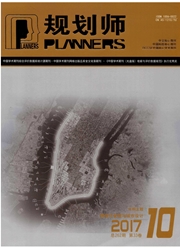

 中文摘要:
中文摘要:
地块组成街区是城市形态的重要特征之一,地块的变化可以作为城市形态时空分析的手段。基于北京市中心城控制性详细规划的地块方向实证研究得到如下结论:北京城区的路网可划分为规则、斜方向、混合和自然四类,这些类型和地块方向密切相关;地块方向与地块的周长、面积和紧凑度等其他指标相关性较小,具有独立性;地块方向存在空间分异,局部地块方向分布规律与整体也不同;地块方向可用于评价规划方案对原有城市形态的继承程度,识别规划方案中扭转了原有城市形态方向的地块的分布。
 英文摘要:
英文摘要:
The parcel direction, as a spatial index to evaluate the urban form in parcel scale, is currently paid less attention in the urban morphology domain. We calculated the parcel direction of the historical urban form of Beijing in 1947, followed with the comparison of the historical and planned forms using the proposed index. The demonstrated conclusions are as follows: The urban form in terms of the parcel direction, can be divided into four types, including normal, slanting, mixed and ecological types. The parcel direction index is not correlated with the perimeter, area, or compactness indictors of the parcel. The parcel direction is explicitly spatial heterogeneous, and its probability density function of the parcel direction within the entire study area varies from that of local parts. Therefore, the probability density function of the parcel direction can be adopted to examine the urban form. The parcel direction can be utilized to evaluate to what extent the planned form inherits the historical form via comparing the parcel direction index of the two forms.
 同期刊论文项目
同期刊论文项目
 同项目期刊论文
同项目期刊论文
 期刊信息
期刊信息
